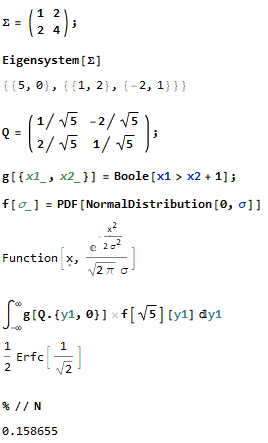$\newcommand\Si\Sigma\newcommand\si\sigma$The calculations can be done as follows.
Consider the spectral decomposition of $\Si$: $$\Si=QDQ^T,$$ where $Q$ is an orthogonal matrix $n\times n$ matrix and $D$ is the diagonal matrix with diagonal entries $\si_1^2>0,\dots,\si_k^2>0,0,\dots,0$. Let $Y:=Q^TX$, so that $X=QY$ and $Y=(Y_1,\dots,Y_k,0,\dots,0)\sim N(0,D)$. So, for any Borel-measurable function $g\colon\mathbb R^n\to\mathbb R$ such that $Eg(X)$ exists, we have $$Eg(X)=Eg(Q[Y_1,\dots,Y_k,0,\dots,0]^T) \\ =\int_{\mathbb R^k}g(Q[y_1,\dots,y_k,0,\dots,0]^T)f_{\si_1}(y_1)\cdots f_{\si_k}(y_k)dy_1\cdots dy_k,$$ where $f_\si$ is the pdf of $N(0,\si^2)$.
Now you can compute the probabilities for $X$ as follows: $$P(X\in B)=E1(X\in B),$$ where $B$ is any Borel subset of $\mathbb R^n$.
For an illustration, here is the calculation of the probability $P(X_1>X_2+1)$ given $(X_1,X_2)\sim N\left((0,0),\left( \begin{array}{cc} 1 & 2 \\ 2 & 4 \\ \end{array} \right)\right)$:

